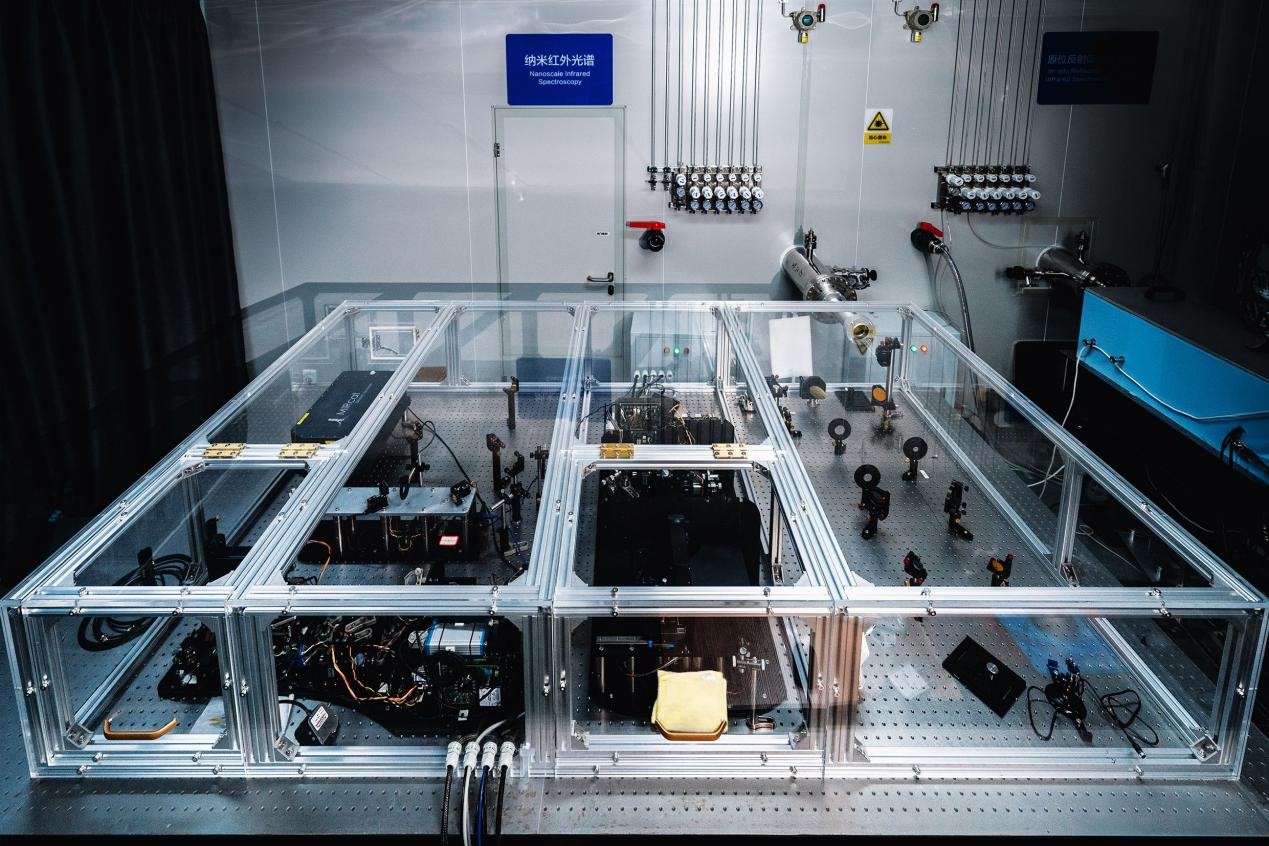The Atomic Force Microscopy-Based Infrared Free Electron Laser Spectroscopy Station (AFM-IRFEL) combines the high spatial resolution of Atomic Force Microscopy (AFM) with the molecular detection capability of Infrared Free Electron Laser (IRFEL) spectroscopy. By overcoming the diffraction limit of light, it enables precise identification of chemical species at the nanoscale. The core technique is photothermal-induced resonance (PTIR): when IRFEL irradiates the sample, infrared light of specific wavelengths is absorbed, causing rapid local heating and expansion in the sample. This thermal expansion excites oscillations in the AFM cantilever. By measuring the oscillation amplitude at different wavelengths, localized absorption spectra analogous to traditional FTIR spectra can be obtained. Research areas include:
lFunctional Materials: Local chemical structure analysis of 2D materials, metal-organic frameworks (MOFs), polymers, perovskites, etc.
lEnergy Chemistry: Spatially resolved infrared detection of active species on catalyst surfaces.
lLife Sciences: Chemical imaging and identification of biological cells, proteins, and related biomolecules.
lSemiconductor Manufacturing and Nanofabrication: Monitoring and identification of photoresists, doped metal oxide materials, and defect sites during processing.
Parameters:
lSpatial resolution: ~10 nm
lSpectral range: 4000-200 cm-1
lSpectral resolution: ~4 cm-1
Contact:
Dr. Jiawei Xue (xuejw@ustc.edu.cn)


